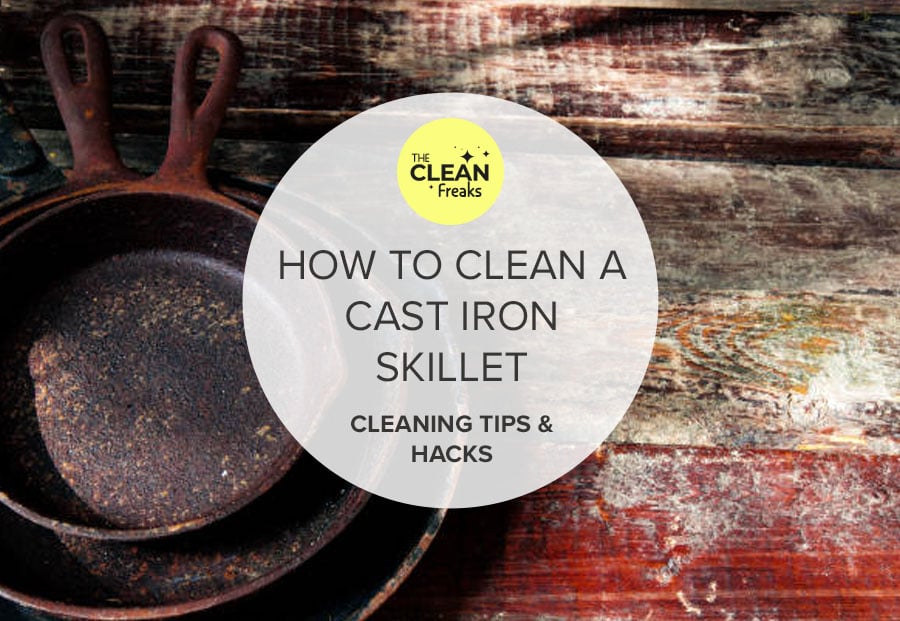We understand that the kitchen is one of the favorite rooms in a house, where all meals are prepared with love. But did you know that the gadgets and tools we have in the kitchen also matter?
If you haven’t started using an iron skillet yet, you are missing out on a whole load of goodness! Apart from having great value for your money, cast iron cookware is unbeatably durable and nonstick with exceptional heat retention.
If you are looking for that one thing to pass down generations, then this should be it! Cast iron pans have been around for ages and have been the preferred choice in many homes.
So how do you take care of your pan to ensure it serves you longer?
First off, you need to know how to clean it well, without damaging the nonstick surface. You don’t need a dishwasher to clean a cast-iron skillet. Taking care of your skillet to improve its durability is done in three ways: cleaning, drying, and seasoning. We also want to add the maintaining your cast iron means always using utensils that won’t scratch the surface or scrape away the seasoning.
Now, let’s get to the actual process.
Steps for Cleaning a Cast Iron Skillet or Pan

Follow these following steps and you will have your cast iron spotless in no time!
Step One: Cleaning Your Cast Iron
Cast iron skillets do not require a dishwasher for cleaning; instead, washing is by hand. In fact, using a dishwasher for cast iron is a complete no no. For better results, always clean your skillet immediately after use. Once you finish cooking, transfer your food to another container and immediately wash your skillet to retain its luster.
The first thing you need to do is use a paper towel or a dry cloth, to wipe off excess oil and food particles from the surface. You can also use a wooden spatula to get any big pieces off (you should also cook with these). Ensure you do this when the skillet is still warm, and never put a cast iron pan that is hot directly into cold water. Just like with any pot, skillet, or cooking pan, this can shock the metal and cause it to warp.
One of the classic ways to clean cast iron skillets is to pour salt in the pan. It serves as an abrasive, and will lift up the food particles without damaging the pan. There is a “great debate” as to weather it’s okay to use soap on cast iron. Some purists will say absolutely not, believing it will remove the seasoning. However, a small amount of dish soap won’t hurt the pan — especially since you should be doing a light re-seasoning after every use.
NOTE: When you first bring home a cast iron pan or skillet from the store, you do want to use soap. This is to remove any machine oils from the factory, as well as dirt and germs.
Using a non-metal brush or scrub and rub gently to remove stubborn food particles and grease. A perfect recommendation is to use a non-metal brush or scrubber to avoid removing the damaging the surface of your cast iron. There are specially designed stainless steel scourers that work really great. Never use steel wool on your cast iron.
Once you have gotten the food residue off the bottom of the pan, rinse under warm water.
Step Two: Drying your Cast Iron Skillet
Cast iron skillets and pans require extra special care, unlike other utensils in your kitchen. While other utensils are drip-dried or wiped using a kitchen towel, a skillet is dried using heat. After washing it following the steps above, place your skillet on the stovetop and allow the heat to dry the excess water on it. The heat should be medium-low and keep the pan over the heat until all the moisture evaporates.
Once dry, apply little oil on the surface and coat the entire surface with the oil, using a paper towel. Keep rubbing the oil around the skillet’s whole body until it looks smooth and shiny, then let the pan cool completely before storing it. This process is to maintain the luster and nonstick surface of the skillet. Drip drying your skillet encourages rust, and that is the last thing you want to happen to one of your most loved possession.
Step Three: Season your Cast Iron
Seasoning, just like we season food to make it more delicious and full of flavor, a skillet is seasoned to improve its shelf life. Seasoning is the process of coating the cast iron surface to make it more durable and to create a non-stick surface. Seasoning is like ‘repairing’ and can be done in two ways, either on the stovetop or in the oven.
To season on the stovetop, place your skillet over the stove and let it heat to the maximum before adding a tablespoon of oil. We recommend using flaxseed oil to season your cast iron. Grapeseed oil also works well. But you can use canola oil, shortening, or any other oil of your choice — however it needs to be an oil that does not have a strong flavor.
Using a paper towel, wipe the skillet’s surface, making sure that the oil touches the entire surface of the skillet. Do not touch the hot pan with bare hands. Once you have wiped away all the oil and the body is smooth, let the pan cool completely before storage.
To season your skillet in the oven, first heat the oven to 500 degrees. While your oven heats, add one tablespoon of oil on your skillet and use a paper towel, rub the oil all over the pan’s surface. Once done, the surface should be dark and smooth. If not smooth to your satisfaction, repeat the process.
Make sure the skillet is not greasy. The goal is to maintain the nonstick material. Now place your skillet in the oven for about 1 hour before removing and letting it cool. Your skillet has to cool completely before storage.
Conclusion

If you love home-made meals, then you must be loving magical skillets and saucepans as well. Cast iron skillet is one such tool with admirable benefits. It is affordable, not easily destroyed, retains heat for longer, and is nonstick. The other advantage is that cast iron comes in many sizes and designs like frying pans, grill pans, skillets, and pots for the home cook to select.
Cast iron skillet is also a healthy option compared to aluminum or other types of nonstick pans and pots. If not well maintained, your food will stick and the skillet may rust, therefore, cast iron requires attention to detail during cleaning and maintenance.
Frequently Asked Questions about Cast Iron

Your skillet becomes greasy when you use too much oil during seasoning or don’t wipe off excess oil. When this happens, you will have to go back to step one of washing with soap and water to remove extra oil then start the drying and seasoning process afresh.
We recommend flaxseed oil because it brings out a smooth finish. But because this oil can be quite expensive, canola oil is the next best choice. Some people also swear by shortening. If, for some reason, you can’t afford either, then go ahead and use the regular oil you use for cooking.
Yes! Keep seasoning your skillet even if it comes pre-seasoned to give your nonstick more protection and lengthen the pan’s lifespan. Therefore, strengthen it after every use.
Absolutely, no (unless you are dealing with an already rusty pan that needs extra care)! Soaking your skillet encourages rust, and that is the last thing you want to deal with. Also, don’t use anything metallic to scrape off the stubborn food particles. Instead, put water in the skillet, then place on medium-low heat and as the water comes to a boil, use a wooden spatula to scrape off the food particles.

